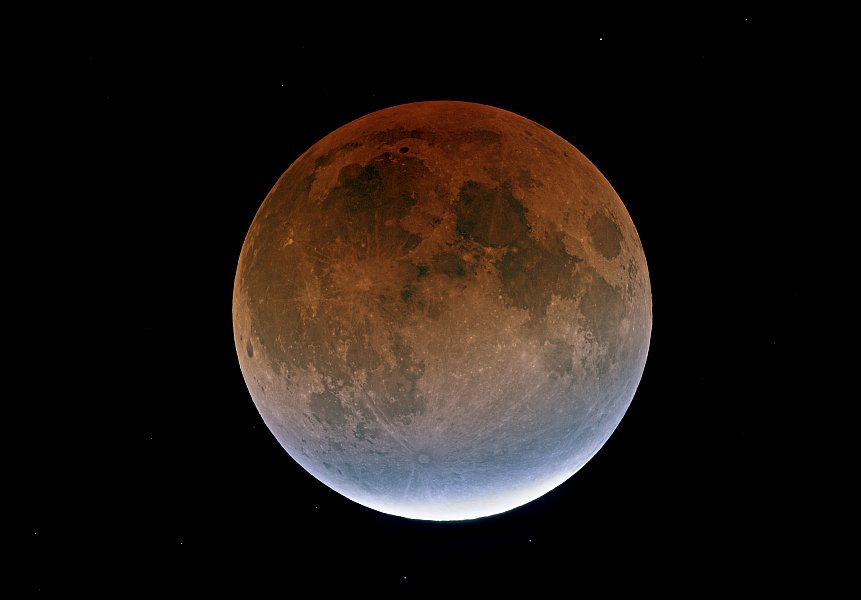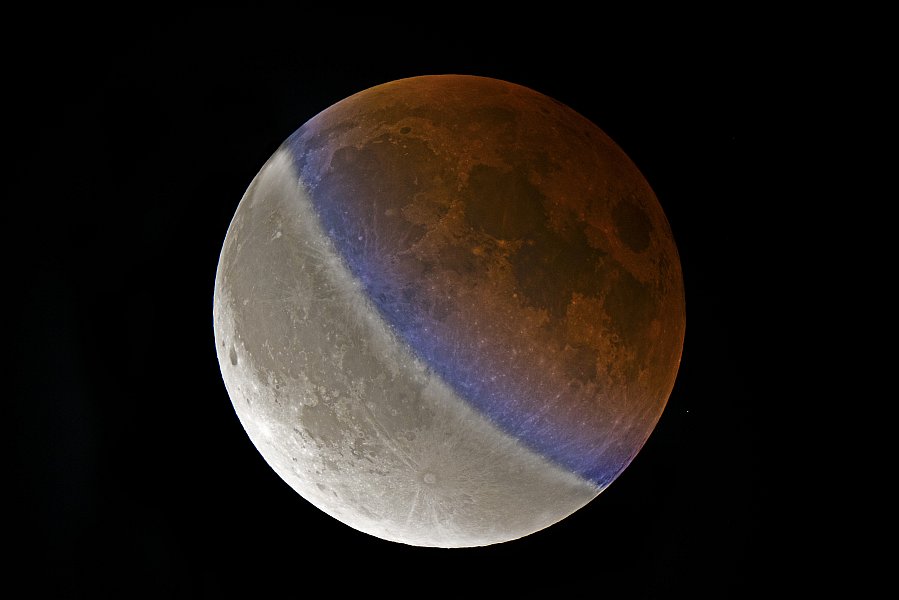The Lunar Eclipse of November 19, 2021
|
Earth's umbra (the
darkest shadow). This event also had the distinction of being
the longest lunar eclipse in over 580 years. Specifically, this
was the longest partial lunar eclipse since February 18, 1440.
This was definitely an event worth witnessing.
November 18 started off mostly cloudy, but the forecasts (TV
meteorologists included) all pointed to clear skies for the
eclipse. With that in mind, I got up at 1AM to start preparing
for a go at capturing a sequence. Unfortunately, despite
forecasts (Astrospheric and the Clear Sky Clock included) for a
partly cloudy sky at that time, it was overcast. The Beaver Moon
did punch through some sucker holes and thinning layers long
enough for me to come to focus with my telescope. However, the
clouds stubbornly hung around. 2:30AM came and went with no
signs of the clouds dispersing. I finally decided to try and nap
until 3:30AM. I tossed and turned restlessly and finally decided
to check conditions around 3:20AM. Lo and behold, the clouds had
parted, with the eclipse partway through.
I hurried to our telescope, consoling myself that although I was
unable to capture a sequence, I would at least attempt an HDR
(High Dynamic Range) composite. Other than a thin cloud that
seemed to mock my first attempt at bracketed exposures, the sky
remained clear for the rest of the night. I shot a sequence of
bracketed exposures all the way through about 5:45AM.
Here is an attempt at an HDR composite
of the eclipse near maximum (taken around 4:05AM). Click on the image below to view a larger version (opens in a new window). |
 |
Exposure times: 1/30, 1/2, 1-second and 2.5 seconds
Digital composite assembled in Photoshop CS5 |
|
|
Most of my prior lunar eclipses were purely
imaging sessions, with only a quick glance at the eclipsed Moon
either through binoculars or naked eye. This time around, I
decided for a change to view the eclipse visually with a scope.
Binoculars views were good but shaky (hand-held, no surprise).
So I brought out a Borg 76ED (small refractor) and gazed
visually. The view with a 15mm TV Plossl was mesmerizing, and it
was also my inspiration and basis for processing the HDR
composites to come represent what I saw through the eyepiece.
Here is another HDR attempt the eclipse at a partial waning
phase, taken around 5:11AM. Click on the image below to view a larger version (opens in a new window). Note that all times are US Eastern
Standard time. |
 |
Exposure times: 1/125, 1/60, 1/30, 1/15, 1/8, 1/4 and 1/2-second
exposures.
Digital composite assembled in Photoshop CS5 |
| |
| Date: November 19, 2021 |
| Location: West Chester, OH |
|
Equipment Used:
TMB-152 APO Refractor on an Astro-Physics AP1200GTO mount. Canon
EOS Rebel t6i operating at ISO 400 |
| |
| Processing Software:
Photoshop CS5 |
|
|
